Best Random Orbital Sander 2023 – Buying Guide and Sander Reviews
This post includes affiliate links. If you decide to make a purchase through my link, I might get a small commission for it at no additional cost to you. Thank you for supporting Upcycle This DIY That!
A random orbital sander is one of the power tools that are present in most households and workshops. It makes the sanding process a lot easier and quicker. A good quality tool should have enough power to tackle all necessary sanding jobs.
The best random orbital sander should be durable, versatile, and easy to use. If you wonder which random orbital sander is right for you, you’ve come to the right place.
This article will tell you about the best random orbital sanders available on the market as well as which features you should look for when buying one.
YOU MAY ALSO BE INTERESTED IN:
Wood Sanding Tips for Upcycling and Pallet Projects
Best Sander for Pallets
Best Finishing Sander-Buying Guide And Sanders Reviews
Best Benchtop Belt Sander
Best Sander for Furniture
Best Sander to Remove Paint
The Best Detail Sander – Reviews And Buying Guide
In this article, I’ll be reviewing the best random orbital sander models listed below:
Best Random Orbital Sander in 2023 Reviews
1. Makita BO5041k Random Orbital Sander
The variable (4000-12000 OPM) can be easily adjusted to match different tasks. It’s lightweight and made of quality materials.
Comfortable to use and has nice smooth sanding action thanks to low vibrations. Easy to control, and extra foregrip makes it even easier.
The 1/8″ random orbital radius gives you smoother results and fewer swirl marks, as well as decreases the possibility of over-sanding and burning the wood.
This sander is one of the quietest when working at low speed and has an excellent dust collection with a shop vac attached. Unfortunately, the kit doesn’t include an adapter for the vac, and when using the supplied dust bag, the dust collection is not that great, especially at lower speeds.
The price, however, is reasonable, but you have to pay extra for the case.
The dust bag collects the dust relatively well when clean and empty and only when running the sander at high speed for a few minutes. It changes dramatically with the shop vac attached. The dust level collection is near perfect, even when operating at lower speeds.
The vibrations levels are extremely low from the lowest to highest speed settings. Working with this tool for hours won’t cause you any stress. The heavy-duty case makes an excellent addition.
Overall I recommend
2. Bosch ROS20VSC Random Orbit Sander
This Bosch ROS20VSC orbital sander is one of the top-rated sanders that is very popular with woodworkers. It features a 2.5 Amp motor and variable speed running between 7,500 and 12,000 OPM(Orbits Per Minute).
Variable speed like this will let you adjust it to the specific task. However, you have to keep in mind that at a low speed, putting much down pressure may result in slowing down the disk. This is fine for final finishing or polishing but will make the sanding task take longer.
My advice is instead of putting a lot of pressure on it, get yourself good quality sanding disks, and I’m sure you won’t have to worry about it slowing down.
Another thing about it is that you might find it not aggressive enough for large material removal. If you need a very powerful sander that will tackle any jobs thrown its way, check out Bosch DEVS1250.
But if you’re looking for a sander that runs very smoothly and will let you achieve a very smooth finish thanks to its integral dampening system, this Bosh is worth considering.
We all want flat, the smoothest finish we can get, and I know how annoying these little swirl marks can be, especially after long sanding sessions.
Rubberized, ergonomically shaped grips and body, as well as reduced vibrations, will allow you for longer sessions without much fatigue.
It’s a versatile tool that accepts a variance of backing pads (RS033, RS034, RS032 backing pads) as well as a buffing pad(RS014 buffing pad), so even if you’re not into woodworking, you’ll be able to use it e.i for sanding and polishing cars.
Last but not least is the dust collection, which appears to be the best thing about this little sander. It features a micro filter system that will catch particles as small as 1/2 microns.
So many positive votes for this dust collection make me think Bosch did an excellent job and came out with a solution that actually works. If you, however, don’t like any dust bags or canisters, this sander is compatible with standard 1-1/4-inch and 1-1/2-inch vacuum hoses or any Bosch vacuum cleaner hose.
Overall is a well-made power tool that is very easy to use even with no previous experience. It won’t win a race, but it’s nice and steady. The pad wears evenly, and the included case is nice but has very little extra storage.
3. Black & Decker BDERO100 Random Orbit Sander
If you have a tight budget or you’re just upgrading from hand sanding, this little sander from Black and Decker could be the one you’re looking for.
I’ll be honest with you. It’s no Bosch nor Makita. It’s not even a Porter-Cable. It’s a compact, basic RO sander that will get any small project done. No fancy features mean a lower price and this one is very budget-friendly.
The 2 Amp motor and 12000 OPM means that it’s not the most powerful one but runs quite smoothly and is easy to control by a beginner.
Although it has many positive reviews, mostly by users with little or no experience in using RO sanders, there are a few issues that keep popping up that I’d like to address.
First, the hook and loop system is not the best one and might fail relatively quickly. Disks don’t hold on well on surfaces less than 2 to 3 inches wide.
The second thing is that ergonomically is not the most comfortable to hold and might not be great for small hands because the handle is quite big.
Also, the vibrations are noticeable, so you probably won’t be able to work for extended periods.
I’m not even going to start on dust collection with the dust bag because we all know how that works, even in higher-end sanders. If you plug it into a shop vac, it would definitely improve.
But if you have one, I don’t think you’ll be considering getting this sander. On a positive note, it’s reasonably lightweight, so your arm will not ache—a good option for upgrading from hand sanding.
4. Porter-Cable 382 Random Orbit Sander
This sander has a 1.9 Amp motor that is capable of producing 12000 OPM. A single-speed means that it won’t tackle every job in a shop, but still, we are looking at a basic tool for beginners. When working with finer grits, it does an excellent job.
It’s when you switch to coarser grits you can feel the motor slowing down. It’s not a deal-breaker, you still will get fine results if you let it work at its own pace, but it will take longer.
A 5-inch pad has a hook and loop system for easy sanding disc changing. However, if you prefer a stick on paper, you can always easily change the base for one that accepts this kind of sandpaper.
Porter-Cable 382 is well-balanced, and it’s easy on the hands. It has a dual-plane counter-balance fan and does an excellent job of reducing vibrations. Dust collection with a relatively empty bag is good but not exceptional, hook it up to a shop vac, and it’s an entirely different story.
The large, multi-port adapter fits comfortably, and you can enjoy a nearly dust-free working environment. Porter-Cable 382 5-inch Random Orbit Sander is a good value for money. It’s sturdy, well-balanced, and easy on the hands—a good sander for DIYers.
5. Black & Decker BDERO600 Random Orbital Sander
This model can be considered an upgrade from BDERO100. It’s a newer model, but is it really an upgrade? Let’s try to dig a bit deeper and tell you about what this sander has to offer.
The first thing you notice is that it has 2.4 Amp motor power and 14,000 OPM, a little bit more than BDERO100. It still won’t be a sander for big projects that require a lot of power, but it would work great on smaller ones.
Another difference is the paddle switch activation, which is an entirely new approach to starting up a power tool. It’s quite intuitive. You simply press the top of the sander with your palm as you usually do when sanding, and it activates the sander.
It’s quite cool, isn’t it? As long as the paddle switch works smoothly. You can also lock it in a working position, which makes it more comfortable to use.
The shape of this sander seems to be designed more comfortably than BDERO100. The size of the handle is smaller and would fit nicely, even for smaller hands. The dust collector works fine, but I wouldn’t count on it to collect most of the dust.
It also wouldn’t connect to a shop vac unless you find an adapter that fits or you make it fit with a little DIY. Overall, another budget-friendly sander that is compact, lightweight, and comfortable.
A great option for beginners and occasional DIY-ers. But if you’re planning to upgrade, I’d look at the DeWalt models below or even Porter-Cable 382.
6. DEWALT DWE6421K Random Orbit Sander Kit and
7. DEWALT DWE6423K Variable Speed Random Orbit Sander
If you’re a fan of the black and yellow label, you’d certainly be interested in learning what these random orbital sanders have to offer.
The DEWALT DWE6421K and DWE6423K are newer versions of very liked and popular models DEWALT D26451 (single speed) and D26453K (variable speed).
They both feature a 3.0 Amp motor that runs at 12,000 OPM(single) and 8,000 – 12,000 OPM (variable speed), which is similar to competitors and will let you accomplish any sanding tasks.
Both models are shorter than the previous ones, which should make them easier to control, as the distance between the handgrip and the work surface is smaller.
They also have pretty much the same speed range and, at the same time, are around 25% cheaper, so excellent news indeed. The rubber over-mold and a separate counterweight inside the tool seem to do a good job of reducing vibrations and making sanding large jobs easier on the hand.
Dewalt actually brags about the sanders’ low vibrations at only 2.5 m/s^2, which is essential when doing long sanding sessions or if you suffer from carpal tunnel, as it helps to reduce hand and arm fatigue.
The handgrip is not too big and would be a good fit for smaller hands.
What else do these two sanders have to offer? Let’s see…
The dust collection works pretty well, even with the dust bag attached. That’s a surprise, isn’t it? The bag features an innovative one-hand locking system, which is handy. Mostly because usually the dust bags or canisters are a real pain to attach securely. Overall they are solid, reliable tools.
Not too noisy and easy to use. The light weight allows you to maneuver easily, and you don’t have to fight the tool along the way.
If you need more convincing, you can check the links for users’ reviews ———->>>>
DEWALT DWE6421K and DEWALT DWE6423K
8. Makita BO5030K 5-Inch Random Orbit Sander and
9. Makita BO5031K 5-Inch Random Orbit Sander Kit
Here take a closer look at two models from Makita. The BO5030K and BO5031K are pretty much the same sanders featuring a 3 Amps motor.
The speed range is 12000 OPM and 4,000 – 12,000 OPM for variable speed one (BO5031K).
They have decent power for various sanding tasks, but this might be not enough if you need more material removal, even with some coarse grits. 1/8-inch orbit size is on the smaller side, which means a cleaner finish.
Easy to control and lightweight (2.2 lbs), will simply let you move it across the workpiece with very little pressure for great results, ready for the finish to be applied.
Ergonomically designed, featuring a rubberized handle and virtually no vibrations that help reduce user fatigue, these sanders will let you work for extended periods. Saying that the vibrations rise significantly in the lower speed range (BO5031K) to the point it can make it uncomfortable to work for longer.
All ball-bearing construction and rubberized switch are meant to increase the durability of the tool. The switch is a bit clumsy to operate, and the variable speed dial can be challenging to operate with gloves on.
The dust removal is decent when using the attached dust bag but nothing extraordinary. Like in most sanders, the bag tends to come off easily.
For much better results, hook it up to a shop vac, it takes the dust collection to the next level. The only problem you might come across is a lack of out-of-box connectivity, but it can be solved with a Fein Step Adaptor. It seems to do the trick.
These sanders are solid, well-balanced, and comfortable to use tools. They are an excellent choice for any woodworker or DIY-er and will not disappoint.
For more info and users’ reviews, check the links —> Makita BO5030K and Makita BO5031K.
10. Bosch 1250DEVS Random Orbit Sander with Dual Mode
This sander has a 6.5 Amp motor, which gives you a lot of power, and a 3100 – 6650 OPM variable speed to match any project(task). It’s not the fastest RO sander on the market, but a Dual Mode compensates for this with Turbo Mode and Finishing Mode.
What’s Turbo Mode? It is the thing that will make you want to forget about belt sanders forever. It’s an eccentric mode for aggressive stock removal.
It will remove up to 5 times more material than in normal random orbit sanding mode.
So if you have a lot of rough timber or pallet planks to sand, this little beast will easily tackle any job you’ll throw its way. If you considering getting a belt sander, you might think again and consider this Bosh.
It’s as aggressive as a belt sander but without the risk of gouging a workpiece. It’s also got a soft start function to reduce start-up torque. The simple flip of a switch changes the mode to finish one, and you have an excellent finishing RO sander that leaves very little swirl.
It might be a bit difficult to handle for inexperienced woodworkers, but as with every power tool, there is a learning curve. There might be a bit bigger one here. The auxiliary handle definitely comes in handy because, in this mode, you’d want to use two hands for better control.
The casing is made of hard plastic, and the gear housing is rugged aluminum. Also, bearings and gears and the switch are sealed against dust for extended durability.
This sander has a vacuum port and works virtually dust-free with a shop vac attached. There will be a lot of dust when working in Turbo Mode, so some kind of dust collection system is a necessity.
Dust port accepts Bosch hoses, and standard equipment VAC002 hose adapter allows connection to 1-1/4 ” and 1-1/2 ” hoses. Well made, and durable with a selection of accessories available to tackle any job. If you’re an experienced DIY-er or a professional woodworker, you’d be delighted with this tool.
RANDOM ORBITAL SANDER BUYING GUIDE
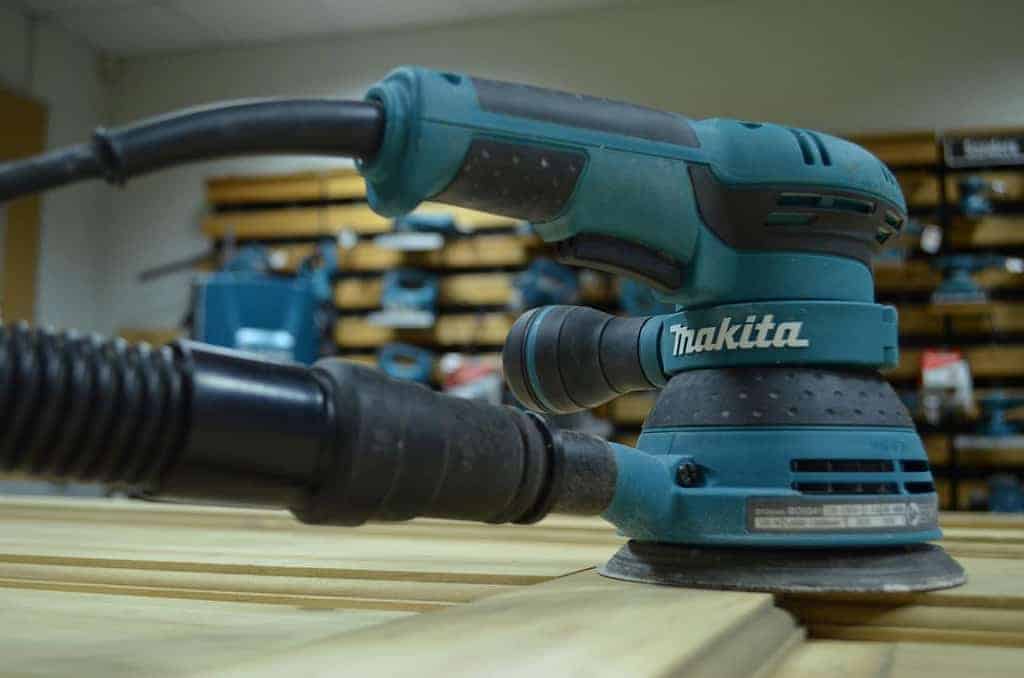
“Makita BO5041 Random Orbit Sander ” by Mark Hunter, used under CC BY 2.0
Random Orbital Sander vs Orbital Sander
Random Orbit Sander
People often confuse it with orbit sander mainly because of the name. The main difference is in the base shape and the way they work/remove material. In RO(Random Orbital) sander, the round base vibrates as well as spins which allow for more efficient material removal.
If you combine it with variable speed, you can achieve different results, from smoothing rough planks to preparing a surface for a finish.
Some of them, like Bosch 1250DEVS, also have a second mode, like TURBO MODE, which makes them even more efficient in removing material. The sanding effects are comparable with those achieved by belt sanders but more difficult to control, making them suitable mostly for experienced woodworkers.
Random orbital sanders usually come in two pad sizes: 5 and 6 inches. Anything under 5in can be considered a detail sander, and anything above 6in is typically a pneumatic sander that requires an air compressor to run.
What to Look for in a Random Orbital Sander?
A Power Source
You can find three types of power sources – corded, a.i mains operated, cordless – battery operated, and pneumatic- operated by an air compressor. You must know that the power source will determine the sander’s motor power and the weight of the tool.
Battery-operated tools tend to be less powerful and heavier due to the weight of the battery itself.
Typically I’d say that corded tools are the way to go, but with battery technology improving at a fast pace is advisable to consider cordless tools, especially when portability is important for you. Pneumatic sanders are more professional-grade and require additional equipment(an air compressor) to run.
Motor Power and Speed
This type of sander usually features motors with 2-5 Amps of power. That’s the input power. The output power is the one you should look for, as that’s the actual power used to operate the sanding pad. Better quality sanders can consume less input power and yet have the same power output.
The pad vibrations/spinning speed varies from 4000 up to 14000 OPM(Orbits Per Minute), and the more rapid vibrating/spinning, the quicker the sanding operation.
Baseplate
It’s the most crucial feature for an excellent flat surface finish. It’s the place you attach the sanding paper to, usually with a hook and loop system(some models accept the stick-on paper as well). Most currently existing models have holes in the base for sawdust removal (reduces surface scratches).
It’s important to remember that the foam part of the base plate will wear after some time, so you’d either have to get a replacement or buy a new sander. So my advice for you is to consider this feature and the cost of a replacement pad before buying, as some pads can be quite expensive to replace.
Dust Collection System
As I wrote above, most modern sanders come with some type of dust collection system in place. It can be a dust bag with or without a shop vacuum attachment/adapter or a microfilter dust canister.
Sawdust is collected through the holes in a base plate. The better the dust collection is, the smoother the sanded surface is, as less sanding dust gets in between the sander and the surface.
Trigger Switch and Trigger Switch Lock
Most of the sanders have a switch that is rubberized for better dust protection. Some of them also can have a trigger with a lock on the side for easier control.
Speed Control
While small, compact random orbital sanders usually have a single speed, some of them come with variable speed as well, which is usually controlled by a trigger switch or speed control dial and allows them to run at different speeds for specific tasks.
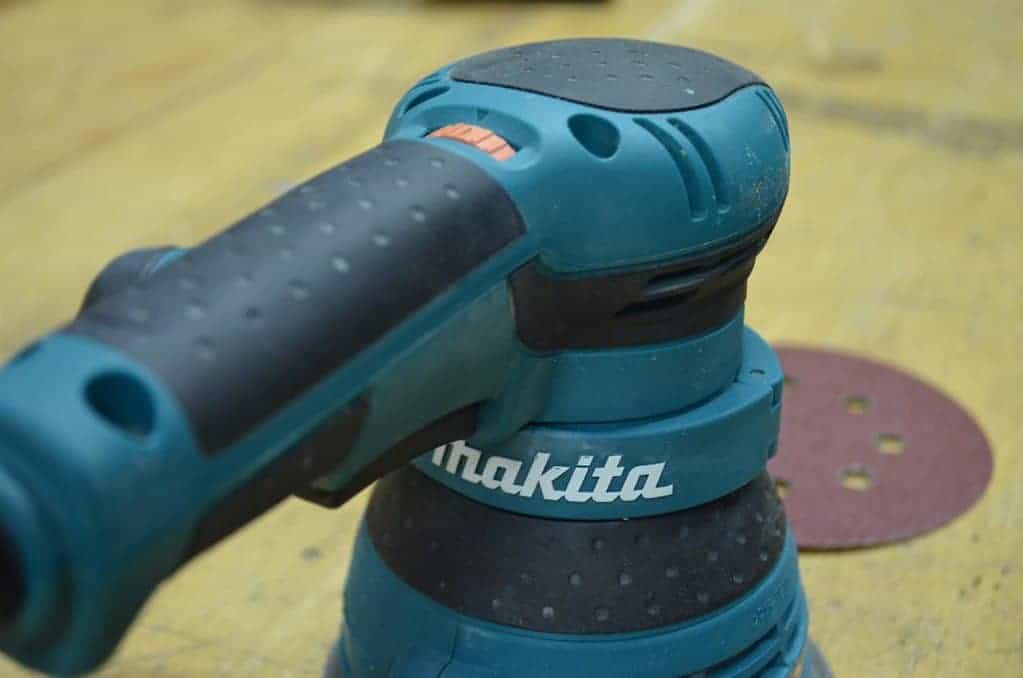
“Makita BO5041 Random Orbit Sander ” by Mark Hunter, used under CC BY 2.0
Rubberized Grip and Handles
Smaller sanders usually are held from the top, or, in some cases, you can wrap your hand around the sander’s body. The bigger ones have a pistol/barrel grip handle and sometimes an additional handle at the front for better control(mostly in random orbital sanders).
Vibration Reduction
It’s essential to have when working for more extended periods as it reduces user fatigue and tingling sensation in the hands.
Best sandpaper for Random Orbit Sander
Random orbital sanders use sanding disks, which are usually attached to the base plate by a hook-and-loop system. This solution allows for quick paper changes. If you are more of a stick-on-paper fan, some of the models have interchangeable bases for this kind of sanding paper that can be purchased separately.
The disks usually have 6 or 8 holes for effective dust removal. You can buy them in batches of various grit sizes. If you’d like to learn more about sandpaper and sanding, please have a look at my article about sanding tips.
Conclusion
Choosing the best RO sander for your projects can give you a headache, so I hope this article has given you some answers. So what are my recommendations? When it comes to choosing the best budget random orbit sander, my choice goes to the BoschROS20VSC sander.
If you’re looking for the best value-for-money tool, I’d recommend DEWALT DWE6423K, and for my top choice, I’d definitely go for Bosch DEVS1250, but I realize that this model wouldn’t be a right match for everyone. If that’s the case, go for Makita BO5041k, which is another fantastic tool.
Subscribe To My FREE DIY Newsletter!
Stay in touch and receive things like updates, special offers, new projects, tips, gear reviews, and more. No spam, promise!
By entering your email address, you agree to get an email newsletter from UpcycleThisDIYThat. I’ll respect your privacy, and you can unsubscribe at any time. For more details, review our Privacy Policy.
Last update on 2024-04-17 / Affiliate links / Images from Amazon Product Advertising API







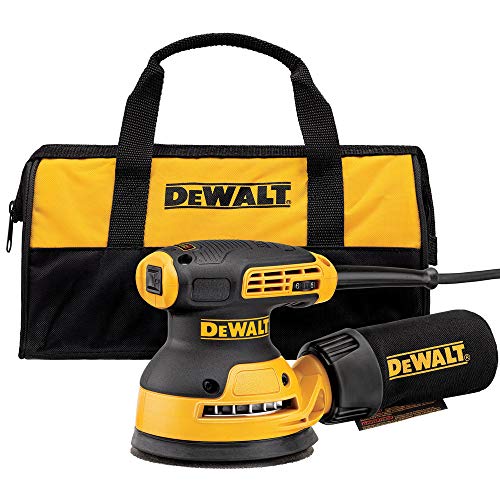



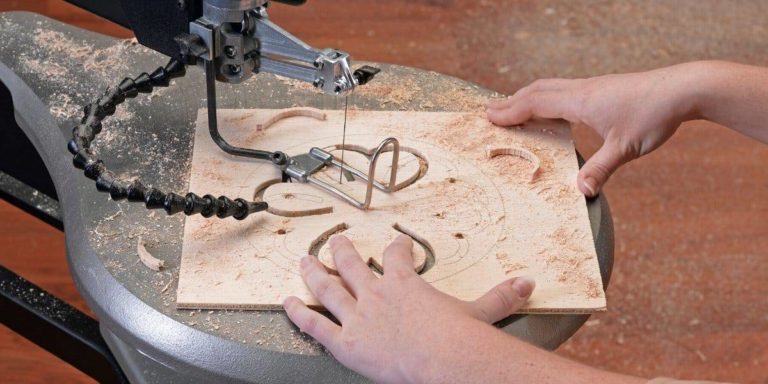
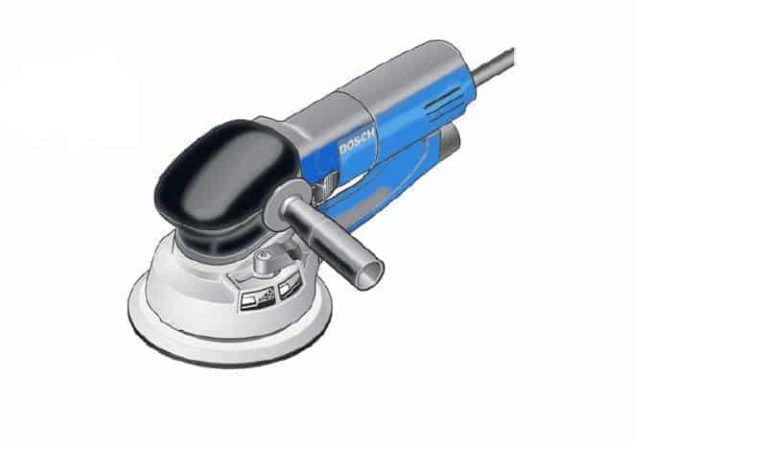
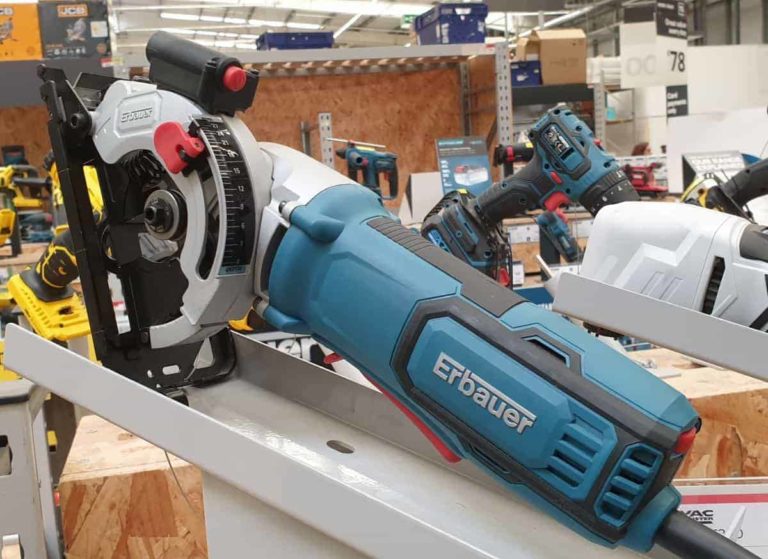

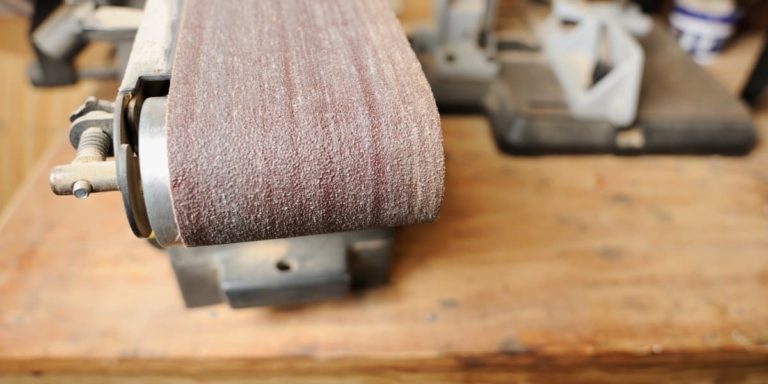

Great post, Kasia.
This is a complete post of many of the available sanders on the market today. You provide excellent details on each model and include all the important questions that any consumer would be interested in knowing.
Is there really a lot of difference in models of the same price range?
When you purchase a sander do you go by brand or price?
Thanks. Paul